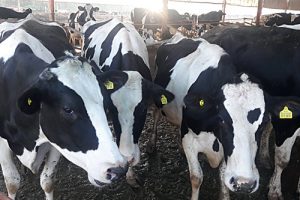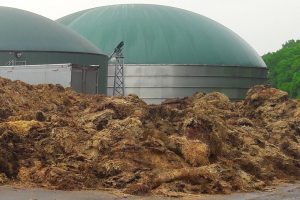from agricultural producer to energy producer.
In Morocco agriculture accounts for 15% of GDP, it employs 46% of the work force. The waste is organic by nature of plant and animal matter. It amounts in agriculture to 52 Mt / year, among this 33 Mt of manure and slurry. The food industry sector adds another 3 Mt / year of organic waste.

Much of the waste is susceptible to natural fermentation and produces greenhouse gas emissions (methane), especially in a humid and hot environment. This process of fermentation can be intentional in a bio digester that produces biogas and fertilizer. Potential feedstock:
- livestock excreta: manure, slurry, poultry, turkey, cattle, sheep, horse, …
- sewage sludge from sewage treatment plants of the food industry,
- waste from the food industry: by-products, wastewater, whey, vinasse, etc.
- waste from oil mills,
- vegetable or fruit waste, rejects from conditioning and packaging center for export,
- waste from the meat industry, slaughterhouse, fat, intestines, contents of belly, wash water…
- fish waste, fish factories, fish conditioning, canning,
- in general biodegradable vegetable and fruit waste.
Indeed, this waste is characterized by great heterogeneity. By operating a biogas plant, a industrial producer can, on the one side, treat its waste / effluents / residues in a sustainable manner and, on the other side, develop an additional and profitable activity, auto-production / consumption of electricity and heat, or biogaz directly for industrial boilers to replace GPL/propane or fuel.
Certain plant waste, which constitutes dry biomass, lignocellulose (wood, olive kernels, etc.), or certain pulps, etc., can be utilized by other processes, some are toxic and difficult to treat (olive pulp). In small quantities (~ 5%) they can be used in anaerobic digestion plants.
rearing of animals. landfilling of waste. greenhouse gas effects.
The agricultural sector accounts for 33% of global greenhouse gas emissions; in Africa, its share is higher. Animal husbandry and agrifood industrial activities are the source of more than half of the global greenhouse gas emissions. In Morocco and elsewhere in Africa, the main causes of agricultural emissions are;

- enteric fermentation of farmed ruminants,
- mismanagement of manure and slurry, scraping, inadequate storage and direct spreading on land,
- synthetic fertilizer,
- the landfilling of wet organic waste from the food industry.
Livestock husbandry has a huge potential for anaerobic digestion and biogas production, as the majority of GHG emissions are linked to animal discharges, so the efficient management and recovery of manure, slurry, etc. here is the key.
3000 dairy cows.
- one cow of 650kg of weight.
- 52 m3/d of slurry @ 9-10% dry matter.
- 3000 cows yield 57,000 t slurry/year.
- Potential of 1 440 000 m3 of biogas /year, continuous, 24/7/365.
- Potential of 840 000 of methane /year.
- Potential of electrical production: 3 GWh /year.
- 8220 kWh electricity /day.
- which returns to 114 Watt /dairy cow.
As for landfilling, it is organic food waste that constitute the major irreversible nuisance on landfills in terms of methane emissions, leachate production and resulting odors.
The utilization of these waste streams in a biogas plant incurs immediate great savings in terms of GHG emissions; the production of biogas is controlled, inside the digester, under a gasholder; this helps countries, like Morocco, to achieve their objectives set out in their NDCs (Paris Agreement), the global methane pledge, etc.
anaerobic digestion. clean. sustainable. feasible.
Livestock manure and slurry, plant waste, food leftovers, and agri-food sludge; all can actually provide their producers with energy savings and a sustainable waste treatment solution.
generizon’s vision allows you to:
- utilize the biogas and its energy through a combined heat and gas engine to reduce your electricity bill,
- and / or directly burn the biogas in an industrial boiler to replace fuel oil / gasoline or propane / LPG,
- produce a nutrient-rich fertilizer; thanks to complete tracing of the inputs the digestate material is clean, this no leachate.
- avoid odor nuisance,
- reduce GHG emissions,
- get certified for complying with waste sustainable treatment standards.
individual conception.

In order to ensure the profitability of the biogas plants, we dimension the installation exactly to the conditions, needs and strategy of our customers. generizon adapts the installation to integrate perfectly with your operation, we establish a tailor-made concept.
We work on all profitability related issues, are able to deliver a comprehensive study in a short period of time and help decision making.
Agriculture in general and animal husbandry in particular have great potential to produce green energy and reduce greenhouse gas emissions.
Efficient management of this waste is the key to exploiting this potential.
it all comes back in the form of waste and leachate. there is a lot we can do. we have an obligation to the next generation.


